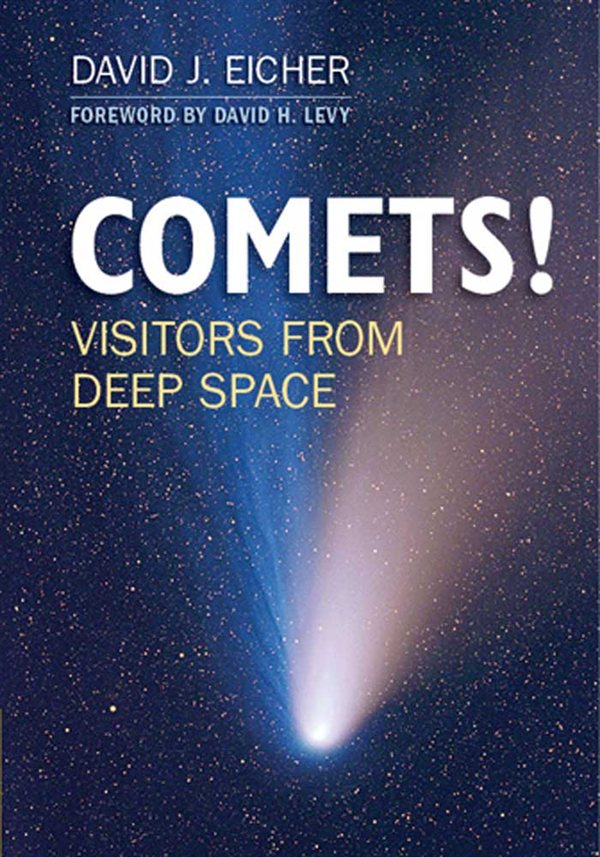 My book COMETS! Visitors from Deep Space will be published by Cambridge University Press this October. Here’s a taste of one of the science chapters, describing how various effects knock comets inward toward the inner solar system.
My book COMETS! Visitors from Deep Space will be published by Cambridge University Press this October. Here’s a taste of one of the science chapters, describing how various effects knock comets inward toward the inner solar system.
Enjoy!
What about the troublemakers? The objects that perturb Oort Cloud comets, sending them inward toward the Sun, have been objects of fascination ever since Jan Oort himself considered them. Prior to 1970, no one knew about giant molecular clouds. Encounters with these massive structures must be quite rare. Estimates place them in the range of three or four every 100 million years. But over time, the effects add up. Over the history of the solar system, they’re believed to be as significant as the effects of all passing stars.
The size and shape of the Oort Cloud are not precisely known, of course. But planetary scientists believe the cloud is a prolate spheroid — a sphere with the polar axis stretched taller than the equator — with the long axis pointed toward the center of the Milky Way. The Oort Cloud may extend as far away from the Sun as 1½ light-years, or about 40 percent of the way to the nearest star, the Alpha-Proxima Centauri system.
Astronomers believe that in the solar system’s past, stars have sometimes passed through the Oort Cloud. They propose that when this happens, the stars would in effect tunnel its way through the cloud. A star of the Sun’s mass, moving at 12 miles (20 kilometers) per second, would excavate a tube about 93 billion miles (150 billion km) wide (a distance 20 times greater than that between the Sun and Pluto), scattering the comets within that cylinder outward. In fact, astronomers believe that plunging stars, over the entire history of the solar system, have ejected some 10 percent of the comets that originally belonged to it.
Planetary scientists further point to the notion that such a star plunging through the Oort Cloud would cause comets to shower into the inner solar system. A star plunging through the inner edge of the Oort Cloud, where many comets presumably reside, could cause a huge infall of millions of comets into the inner solar system. These kinds of events may have never happened, but if they did, they probably took place in the early history of the solar system, when the Sun was still in the open star cluster in which it was born.
In an attempt to analyze the potential dangers of a star passing near or through the Oort Cloud, astronomers have produced computer models, based on the Hipparcos spacecraft data, attempting to pinpoint possible close encounters with stars in the future. One such study suggests that about 12 stars pass within 3 light-years of the Sun every million years. Assuming the Sun’s current orbit about the center of the Milky Way and the galactic neighborhood around us stays the same, this would mean that something like 50,000 close encounters with stars have taken place to this degree in the history of the solar system. But perhaps some three-quarters of these encounters have occurred with red dwarf stars, which would have little effect on the cloud because they lack sufficient mass to stir things up like a solar-mass star would.
Other effects are even more significant in perturbing Oort Cloud comets than passing or plunging stars, however — and also stronger than passing giant molecular clouds. The gravity of the Milky Way’s disk itself is the most significant influence on the cloud’s member comets. The so-called galactic tide, perturbations in the gravity of the Milky Way’s disk, is stronger, causing an inward step of the perihelia of comets, helping to push comets inward more effectively and also shoving them past the gravitational barriers of Jupiter and Saturn.
Another question confronts astronomers who contemplate the Oort Cloud. If so many comets within it are dispersed over time, then is it steadily losing its cometary population, or is something helping to replenish the cloud? Astronomers think it’s unlikely that comets could be captured from interstellar space simply because of the energy required to change orbital dynamics. But they do believe the outer Oort Cloud could be restocked from a reservoir of comets existing in the inner Oort Cloud. It may be that passing stars push up the energy of these comets’ orbits to move them outward.